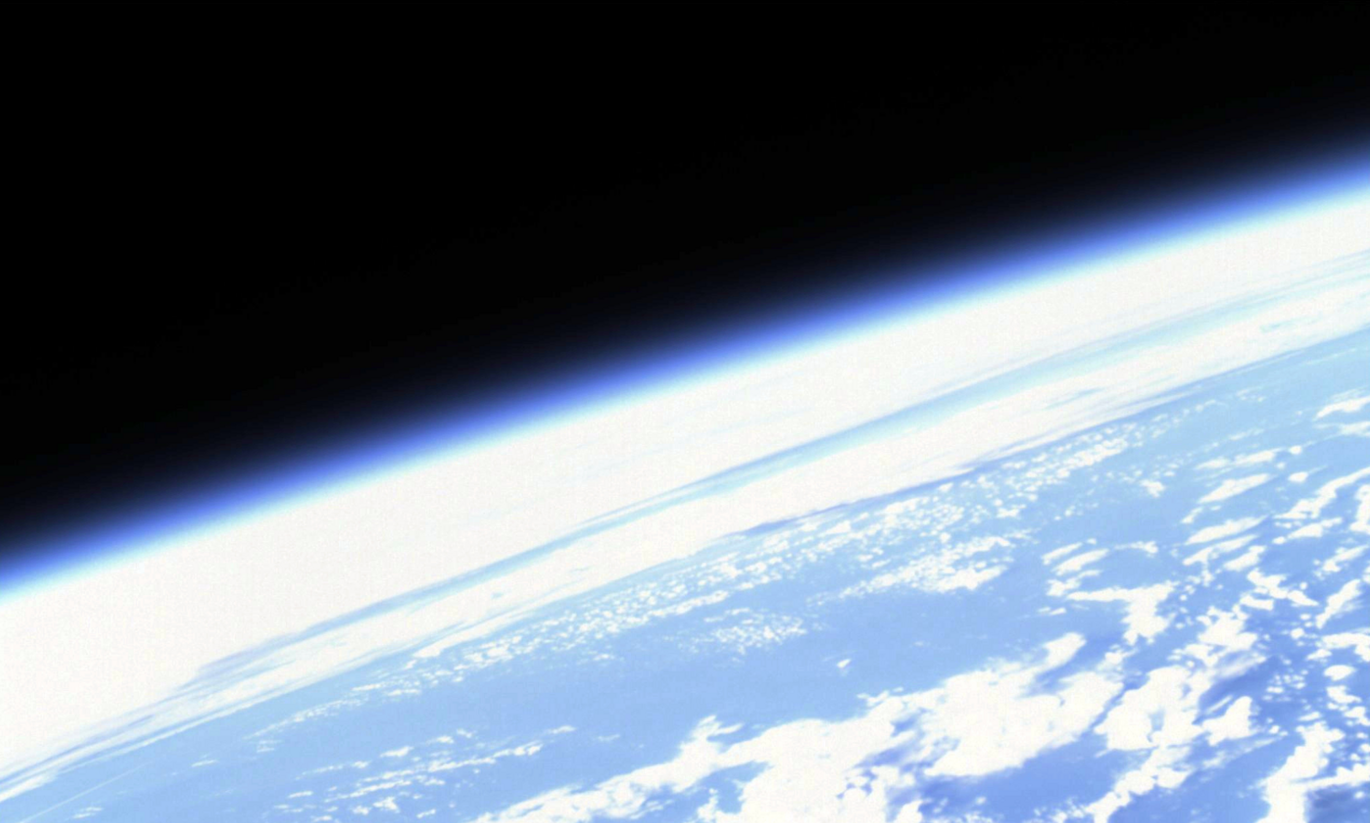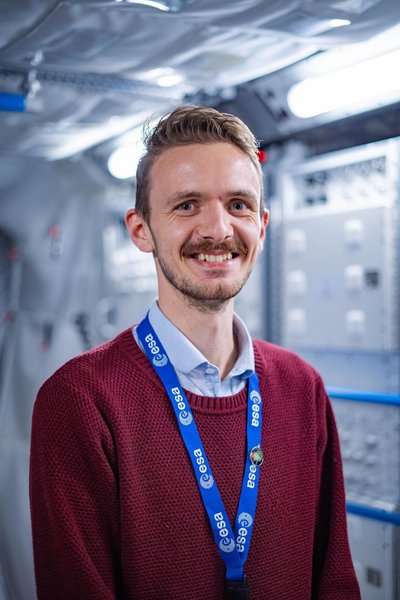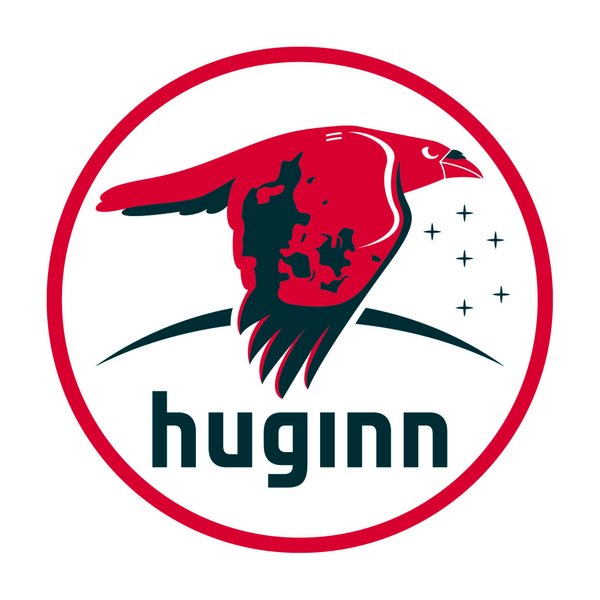"I started with Andreas, and now I'm back to Andreas": former AU student to handle Mogensen's communication during space mission
Hasse Hansen has a Master’s degree in astronomy from Aarhus University and was part of the team behind AU’s first student satellite, Delphini-1. Things have moved quickly since then, and he is now working on the communication for astronaut Andreas Mogensen’s next space mission, Huginn.


If all goes to plan, Denmark’s first (and only) astronaut, Andreas Mogensen, will head back into space on 17 August. Mogensen will command the International Space Station (ISS) for five months, which is longer than any European astronaut has spent at the station. But because the workload of an astronaut and commander is already large, an external company has been brought in to handle Andreas Mogensen’s communication whilst working and living at the space station.
The company is called EJR Quartz. It is based in The Netherlands and specialises in communication about the natural sciences. One of its employees is former AU student Hasse Hansen, who, unlike many of his colleagues, has the advantage of being able to speak Danish. Hasse Hansen will be responsible for Andreas Mogensen’s communication during his mission. Also on social media.
About the Huginn mission
The Huginn mission on the International Space Station will last almost six months. During the mission, various experiments will be conducted, including an experiment about the sleep patterns of astronauts, for which Andreas Mogensen will supply data. The name of the mission comes from the Norse god’s, Odin’s, raven of the same name. According to mythology, the raven flew off every day to gather information to bring back to Odin, who eagerly awaited its reports – so the parallels with the space mission are clear. It is Mogensen who chose the name of the mission and the mission patch.
Source: Hasse Hansen.
From AU to ESA
When Andreas Mogensen went into space for the first time on a ten-day mission in 2015, it generated interest in the space sector here in Denmark. As part of this interest, Aarhus University initiated its first space programme, in which a team of students had to build and launch a satellite. This resulted in the satellite Delphini-1: a cube-shaped satellite measuring 10 x 10 x 10 centimetres. Hasse Hansen was part of the team of students responsible for constructing, launching and collecting data from the satellite.
“I was a student operator on that project, and I worked on it from my Bachelor’s until my Master’s. When the Delphini went into space, I helped to communicate with it and to organise the other aspects of the project, and I learned a lot from this,” he explains.
So when he saw that the European Space Agency was advertising for a new Young Graduate Trainee to supervise other European students in their cube satellite programmes, it was a no-brainer for him to apply.
“I got the position at the ESA while I was writing my Master’s thesis, and I was in the Fly Your Satellite programme for two years before I moved to EJR Quartz. I often say that I started with Andreas, and now I’m back to Andreas. I believe that working on the Delphini project helped me get a job at the ESA, because I had 18 months of experience working with a satellite. During the project, we were able to meet Andreas a few times and talk to him. When I met him again as an employee of EJR Quartz, I asked whether he could remember me,” explains Hass Hansen, who had to admit that the world-famous astronaut was unable to remember their earlier encounters.
“But he’s met thousands of people since then, so I suppose that’s fair enough,” he acknowledges.

Very down to earth
Today, Andreas Mogensen knows exactly who Hasse Hansen is. The two men are in regular contact thanks to the role that EJR Quartz is playing in the Huginn mission. In addition to talking to the astronaut to get input for articles and press releases, it is also Hasse Hansen’s job to listen to Mogensen’s use of language so that he can reproduce his personality as well as possible in his posts.
“You have to get to know a person in order to help them with their social media. I always have to think ‘How would Andreas do this?’. He is often in Houston, where he lives with his family, and most of our contact is over email. When we write to each other, I also get a good idea of phrases that he likes and others that he’s not too keen on,” he explains.
With a smile, Hasse Hansen also remarks that, over time, he has found the right words to describe the Danish astronaut.
“He obviously thinks that it’s an incredible experience to go up to the space station, but it has not gone to his head. I often joke that he is very down to earth in a good Danish way”, he explains.
Aim for the stars
In addition to his work for the Dutch communication firm, Hasse Hansen can celebrate the three-year anniversary of his astronomy podcast, which he presents with his friend Lasse Berthelsen.
“We like talking about astronomy and space in a way that the average person can understand. The idea for our podcast came when one of our friends said that ‘Hasse and Lasse’ sounded like a good name for a podcast,” he says.
Though the podcast ended up being called Mod stjernerne (Aim for the stars).
“YESTERDAY’S COFFEE WILL ALSO BE TOMORROW’S COFFEE”
Hasse Hansen’s interest in space started as a ten-year-old boy, when he was given a book about space travel by his father. The astronomer also tried his luck when the ESA were looking for new astronauts last year.
“I applied to be an astronaut, but, when I look at the new class of astronauts, I can understand why they chose them. They are super-human people who can do anything – write a PhD or fly a fighter plane. So it’s absolutely fine that I won’t go into space. Instead, I can work for Andreas Mogensen, and I also think that’s pretty cool,” he says.
Even though he is not pursuing a career as an astronaut, Hasse Hansen is pleased that space features in a different way as part of his job today.
“I think it’s important to talk about space as something specific that we can relate to, because it’s often very abstract to understand. One of the things I will focus on during Andreas’ mission is explaining what his work on the international space station can mean for us here on Earth. For example, we often say that yesterday’s coffee will also be tomorrow’s coffee, because people on the space station are really good at re-using resources to avoid having to have things sent up the whole time. So we can learn a great deal about smart wastewater systems on the space station and we can apply this knowledge here on Earth,” he explains.
A “HUGE BOOST” FOR THE DANISH SPACE SECTOR
With Andreas Mogensen’s impending return to the ISS, interest in space travel has once again soared here in Denmark, and this has boosted the Danish space sector.
“Space travel is a growing economy – both in Denmark and in the rest of Europe. There has been a huge boost in interest for the space sector in Denmark, and many exhibitions and conferences are being organised about it. One of the things I’d like to say through my work is that there is room for many more people in the space sector. There are several different positions, so, if you are interested in space, there will probably be something for you,” he says in his call to fellow space enthusiasts.
In a few weeks, Hasse Hansen will pack his bags in The Netherlands and head off to Florida, where he will witness and document the launch of Andreas Mogensen and the other astronauts on the mission.
“The date is set for 17 August, but launches can of course be delayed for all sorts of reasons. But, for now, we’re assuming it will go ahead then,” he concludes.
Translated by Sarah Louise Jennings.

